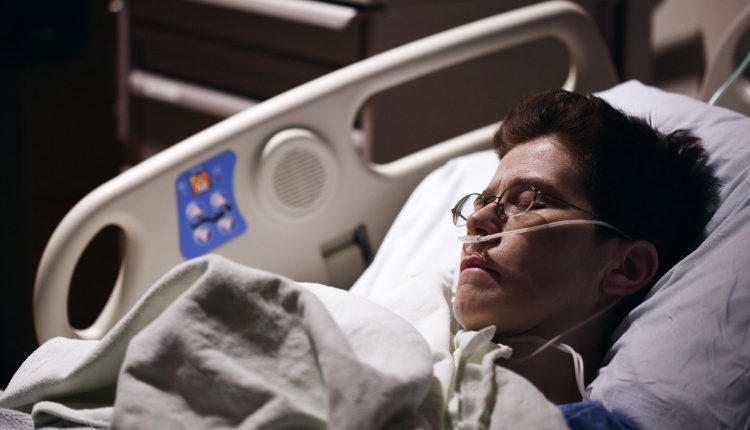Portable Oxygen Concentrators: The Ultimate Guide to Finding the Right One
According to the government figures, there have been around six million confirmed coronavirus cases in the UK, with the death count being 130,000. The situation doesn’t seem to be slowing down as the number of daily confirmed cases rose sharply in June and early July.
If you are showing mild COVID symptoms, isolating yourself and taking all precautions is the best option to beat the virus. This will not only help you recover but also assure the safety of the people around you. If you are getting treated at home, ensure that you have all amenities in place, including medicines, nursing care, and most importantly, oxygen concentrators.
Oxygen concentrators have proven to be a savior for those who are mildly affected by COVID and are getting treated at home. You will find more information on how to choose the best portable oxygen concentrator here.
Understand How Oxygen Concentrators Work and Help With COVID?
It’s common knowledge that COVID-19 is a respiratory disease that takes its toll on the respiratory tract and lungs of the infected person. As a result, the blood oxygen saturation level is at the risk of going below the ideal level. Because of this and increasing lung infections in coronavirus patients, oxygen concentrators are becoming crucial for those affected.
To understand the importance, imagine your lungs are not performing at their best, and as a result, they are incapable of removing carbon dioxide from the body and adding oxygen. This could result in some severe repercussions in terms of health. Now that we know the importance of lungs and what they do, here’s how concentrators help.
Fun fact: the air around us comprises 78 percent nitrogen, 21 percent oxygen, and one percent other gases. What oxygen concentrators do is take in the ambient air to isolate and concentrate the oxygen. It then delivers this pure oxygen to the patient’s body through a balloon mask. This helps maintain a steady SpO2 (blood oxygen saturation) above 93 percent.
Moreover, most oxygen concentrators require a constant power supply to suck in ambient air and provide pure oxygen to the patient. The concentration will continue providing oxygen until it’s manually shut down.
What Are the Different Types of Concentrators?
There are two types of oxygen concentrators available in the market – continuous flow and pulse dose. As the name suggests, the constant flow oxygen concentrator maintains a constant flow of oxygen per minute until it’s turned off.
On the other hand, a pulse dose oxygen concentrator is a smarter variant and detects the patient’s breathing pattern. Every time the patient inhales, the concentrator pumps out the pure oxygen. The downside of pulse dose units is that you cannot measure the oxygen dispensed by pulse units.
Oxygen concentrators are also classified based on their size, weight, and oxygen output. There are again two types – portable and home oxygen concentrators. The former is very compact and ideal for traveling. However, their small size means a lesser output of under 3 liters per minute. Thanks to the portability, these concentrators are pretty expensive as well.
On the other hand, home oxygen concentrators are relatively large and not designed for movement. These concentrators have a higher output of around five to 10 liters of oxygen per minute. The stationary oxygen concentrators cost much less than the portable ones.
Here’s a thumb rule to determine whether to go for a portable oxygen concentrator or a home unit. For mildly infected coronavirus patients with lower bacterial levels, portable concentrators should work just fine. However, critical patients with shallow SpO2 levels require higher oxygen dosage per minute and will require a stationary oxygen concentrator.
Who Must and Must Not Use Oxygen Concentrators?
When it comes to COVID-19 patients, health experts have laid down some guidelines for external oxygen therapy. If the SpO2 levels are steady between 92 and 94, there’s no requirement for an oxygen concentrator. In some cases, even patients with 90-94 blood oxygen levels might need close monitoring and not need an oxygen concentrator.
However, if the blood oxygen level drops below 94, it’s best to start making arrangements for a concentrator at home to prevent any mishap. Also, do note that only patients with 90-94 blood oxygen levels and moderate symptoms can survive on a concentrator. For patients with SpO2 levels under 85, a more advanced system like a ventilator is suggested.
The key takeaway here is that if you are mildly infected and getting home treated, oxygen concentrators are pretty crucial. The concentrator can raise the lung capacity and, in turn, save your life.
https://images.unsplash.com/photo-1606166187734-a4cb74079037?ixid=MnwxMjA3fDB8MHxwaG90by1wYWdlfHx8fGVufDB8fHx8&ixlib=rb-1.2.1&auto=format&fit=crop&w=1500&q=80


Comments are closed.